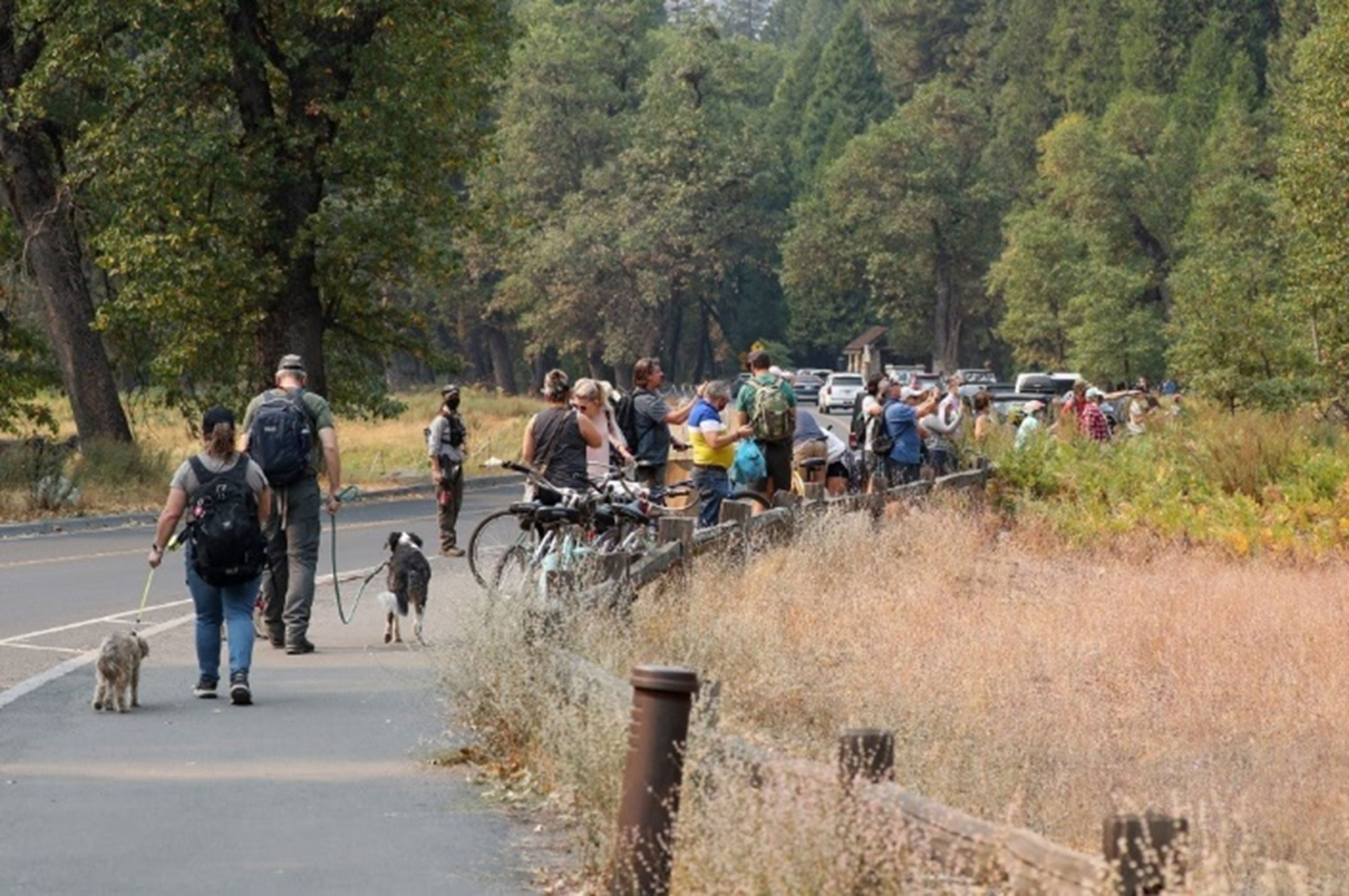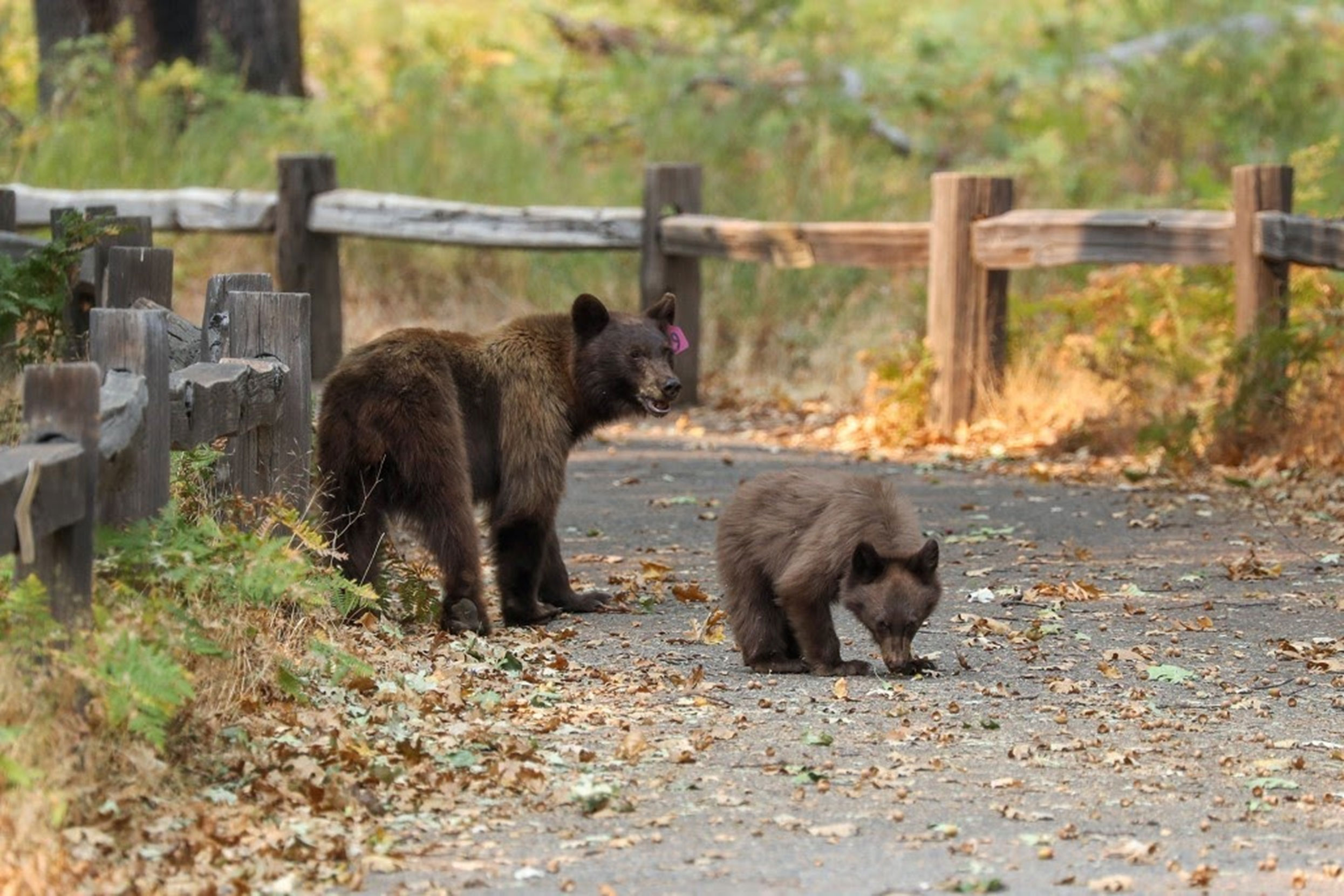
Photo Credit: Drew Wharton
Visitors to Yosemite Valley last fall were more likely than usual to see a bear during their trip. Acorns dropping from Yosemite Valley’s black oaks were perfectly timed with black bears entering hyperphagia, a period when bears are looking for big calorie boosts (up to 20,000 calories every day or eleven pounds of acorns) as they prepare for winter hibernation. Other fall food sources may have fallen flat, making the acorns in Yosemite Valley a particularly big draw for bears. It was truly a sight to behold! Despite normally being solitary animals, numerous bears could were regularly foraging together in small areas due to the abundant food source. Sows were leading their cubs through their first acorn harvest and even exciting displays of the hierarchy among bears was playing out—with dominant bears (often the large males or defensive sows) chasing the more subordinate bears (often the smaller and younger bears) away from their feast.

Photo Credit: Drew Wharton
In years like last year when acorns are abundant, the trees attract bears which in turn attracts the attention of thousands of enthralled visitors. While these displays are exciting to witness, the proximity of some of these bear-filled oaks to busy roads, trails, and development can create big hazards for bears. Rangers extensively and creatively managed these areas in order to keep people back and allow these bears to remain wild. Initially, rangers tried scaring the bears away from oaks near trails and roads, only to have them return a few minutes later. The bears quickly made it clear that they weren’t going anywhere as long as the acorn feast remained. These bears triggered massive crowds and huge traffic jams (“bear jams”), which created some chaotic situations. Ultimately, a temporary trail closure gave bears and people a bigger buffer, and rangers spent most of their shifts monitoring the situation, keeping people back, and educating thousands of people about the importance of giving wildlife space as they admired the agile tree climbing eating machines.

Photo Credit: Drew Wharton
For bears, their natural fear of people is an important instinct that keeps them safe. When a bear becomes habituated, losing its natural fear of people, other behaviors can change and dangerous situations can evolve with people. This is why rangers staffed these areas from late August through November. Rangers also created a fun new display to show people exactly how far they should be from a bear: a fun wooden bear silhouette designed to stand a 50 yards down a trail from a sign with bear information on it. This sign explained what to do if you see a bear, and demonstrated exactly how far visitors should remain from bears in order to help keep them wild. All these efforts, as well as the interest that visitors took to learn and understand their role in protecting wildlife in national parks, helped make a difference in these acorn eating bear’s lives.



